No wall, no doors Buahan, A Banyan Tree Escape — Hotel Review
Perched high up in the Buahan valley, these villas feel like a stage set in a dense jungle teeming with wildlife. Here is our verdict.

As soon as I wake, my ears fill with the sounds of Bali’s Buahan valley. A rooster crows on a distant farm, a gecko chirps on my villa ceiling and a frog calls from beside the shower. Thousands of cicadas chime in with a riotous din before the birdlife takes over the melody, their song carrying across the river coursing below. The dawn chorus is so loud, so vibrant, that for a fleeting moment I wonder if I forgot to close the windows before I went to bed.
And then I remember – there are no windows at Buahan, a Banyan Tree resort. Nor indeed are there any doors or walls at this remarkably designed open-air getaway, set on a hillside in the jungle-covered centre of Indonesia’s most popular island.
On an island teeming with flashy accommodation that often seems disconnected from Bali’s peaceful culture and communities, Buahan stands apart for its dual offering of luxury and authenticity. Opened in 2022, and about 20km north of the town of Ubud, the adults-only resort is the first in the international Banyan Tree group’s new Escape division, which promises immersion in nature, local experiences and sustainable design. At Buahan, that means excursions into surrounding villages, an innovative menu of locally sourced food and stunning open-air Balinese-inspired buildings set amid thick jungle.
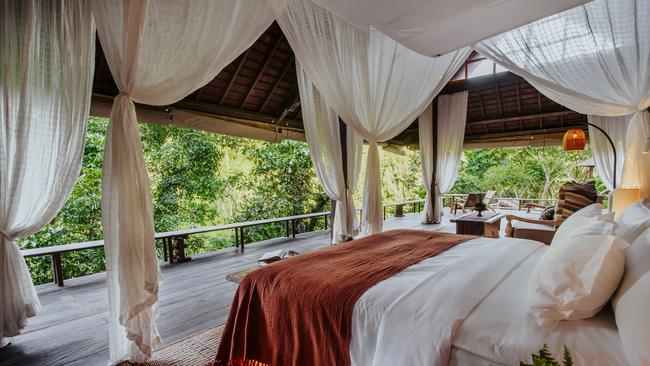
With no walls to block them, gentle mountain breezes waft through the resort’s two-storey dining and lounge pavilion perched near the top of Buahan valley, as well as the 16 luxury guest villas studded across the 4ha property.
Known as bales, a reference to traditional open pavilions found in Balinese villages, the generously sized guest quarters are constructed from salvaged dark ironwood and are positioned against the hillside to capture views over the valley and Bali’s distinctive seven mountain peaks, all while ensuring guest privacy.
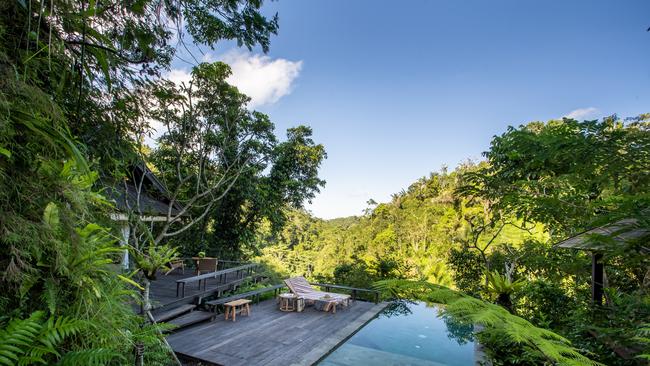
Linear in design, my 160sq m River Valley Pool Bale feels like a stage, albeit roofed, within an amphitheatre of dense jungle teeming with wildlife. At one end, the spacious living area includes a large teak daybed and bar area. At the other, an open bathroom is cloaked by foliage. Sitting in the middle of the bale, my king bed is encircled by sheer white curtains, creating an inner sanctum where the breeze may enter but passing insects are excluded. At night, a row of the same fine drapes is drawn around the perimeter of each bale in an act that places a gossamer layer between guests and the natural environment. While native long-tailed possums scamper in the trees next to my veranda during the day, the bales are built on poles that deter most unwanted visitors. The only unexpected guest during my three-night stay is the frog I discover in my shower one evening.
Although the accommodation has a laid-back rustic air, luxurious touches are plentiful, from a private plunge pool and hand-smithed copper bath to the sail-like structure suspended above my bed that produces cool air at the touch of a button.

Buahan’s strong connection to its location is evident throughout. Many of the furnishings are produced locally, as are the soaps and an effective natural mosquito repellent, while my bar fridge is stocked with moreish treats made from cacao harvested from the resort’s trees.
Outside my quarters, gravel paths and irregular stone stairways lead the way to Buahan’s Open Kitchen. The site rises steeply and I count more than 100 stairs to the restaurant, although a funicular provides some reprieve for guests who find the paths challenging.
Meals are a generous affair thanks to executive chef Sheandy Satria and his team, who use bounty primarily grown in Buahan’s organic gardens and on nearby farms. As the sun sets over the mountain peaks each evening, we gather at timber tables decorated with vases filled with the pretty herb centella asiatica and enjoy six-course dinners that include tasty dishes such as papaya leaf tempura and mushroom egg chawanmushi.
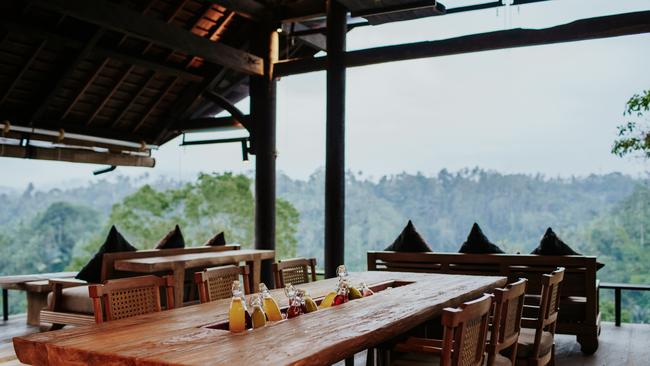
But it’s Buahan’s breakfasts that are the most impressive. I start each day with a creamy latte made from the nutrient-dense herb moringa, regarded as Bali’s superfood, and a refreshing glass of spicy jamu, a traditional Indonesian drink made with turmeric and ginger. The menu is vast and includes options such as fresh pastries, local jams and seed granola, although my vote goes to the “Indonesian heritage” offerings that include a memorable jammy chicken curry, served on a banana leaf with rice cooked in coconut milk and a spicy sambal.
One morning we join Sheandy on a stroll through Buahan’s gardens as he points out butterfly beans and a yellow passionfruit as big as a melon before taking us to a nearby farm overflowing with organic produce, including jackfruit, vanilla beans and wild berries.
We return to the resort for a mouth-watering cooking class, one of myriad activities on offer at Buahan. Guests are encouraged to learn more about the Balinese way of life on daily guided excursions that include explorations of local rice fields and bike rides to nearby villages.
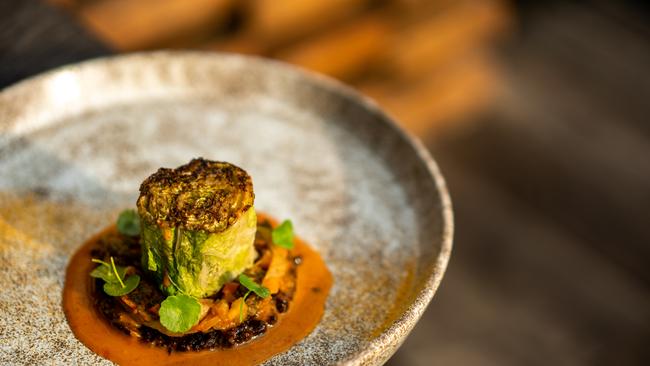
On a fascinating visit to the ancient village of Taro, where Hinduism was first introduced to Bali, local resident and environmental champion Wayan Wardika explains the concept of Tri Hita Karana, the Balinese philosophy of spiritual, community and natural harmony embraced at Buahan. Wayan, who assists Buahan with its organic farming, guides us through an offering ceremony in his temple before taking us to his passion project, a nursery aimed at restoring the local firefly population, which acts as a bioindicator of environmental health.
Within the resort, activities include a blessing ceremony at the waterfall that surges into the Ayung River below and meditative yoga sessions. As storm clouds scud across the valley one afternoon, I take a dip in the picture-perfect infinity pool cantilevered out amid the treetops outside the Open Kitchen.
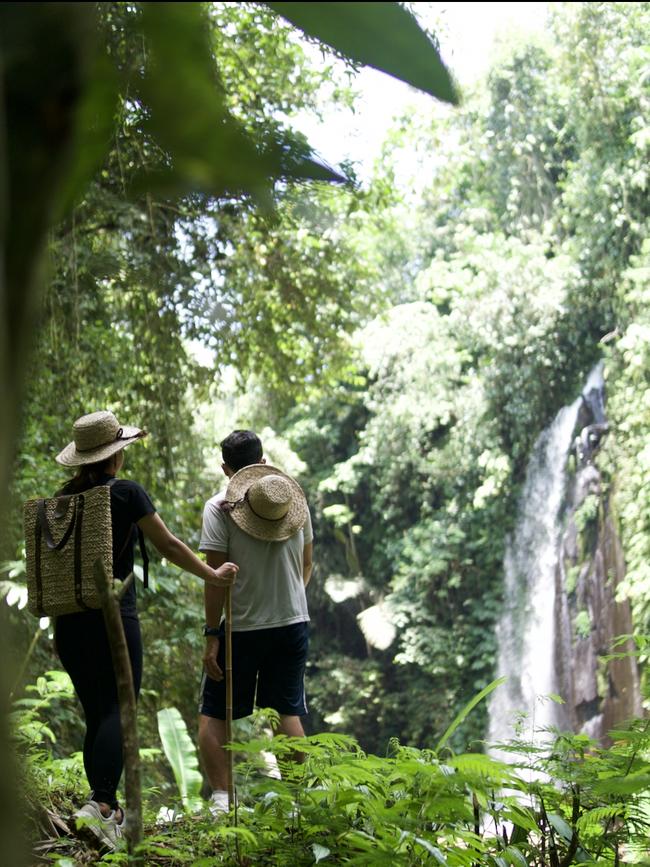
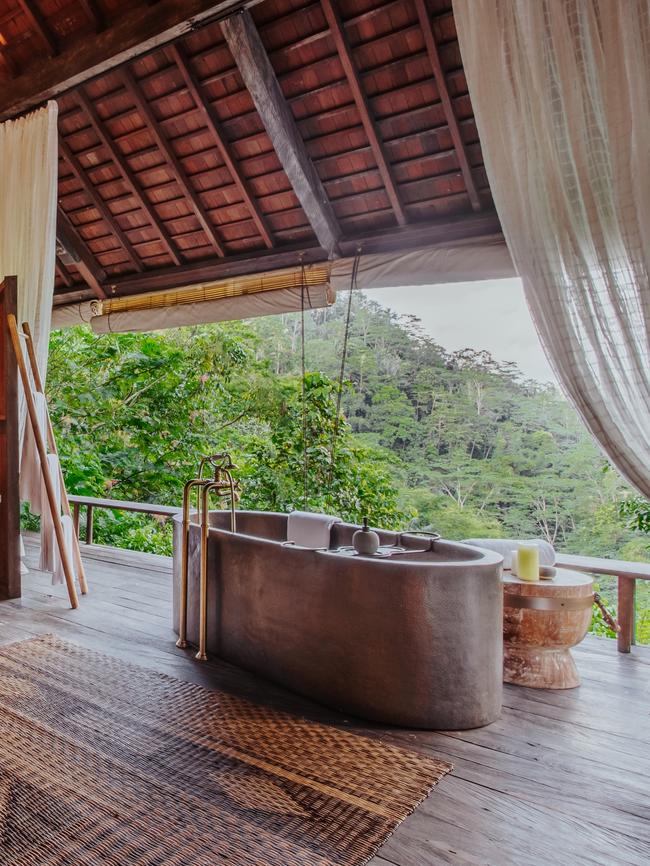
Retiring to my bale, I wrap myself in a robe decorated with the same distinctive circular design found on the resort’s pool towels and sarongs. True to Buahan’s ethos, it’s a design that reflects the environment. Created by the process of cymatics, which converted the sound of Buahan’s dawn birdsong into a reoccurring motif, the pattern is yet another nod to our extraordinary surrounds as well as a beautiful reminder of my early morning serenade.
In the know
Buahan, a Banyan Tree Escape, is two hours’ drive from Bali’s Denpasar International Airport. Rates start at 15,075,000 Indoneisan rupiah ($1412) plus taxes a night, twin-share, for a Rainforest Pool Bale, including breakfast and dinner.
Libby Moffet was a guest of Buahan, a Banyan Tree Escape.
If you love to travel, sign up to our free weekly Travel + Luxury newsletter here.




To join the conversation, please log in. Don't have an account? Register
Join the conversation, you are commenting as Logout